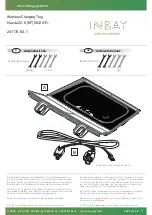
167
4-6. Tips for operating the audio/visual system
4
Audio/visual system
4-6.Tips for operating the audio/visual system
●
The use of a cellular phone inside or near
the vehicle may cause a noise from the
speakers of the audio/visual system
which you are listening to. However, this
does not indicate a malfunction.
Usually, a problem with radio reception
does not mean there is a problem with
the radio
it is just the normal result
of conditions outside the vehicle.
For example, nearby buildings and ter-
rain can interfere with FM reception.
Power lines or phone wires can inter-
fere with AM signals. And of course,
radio signals have a limited range. The
farther the vehicle is from a station, the
weaker its signal will be. In addition,
reception conditions change con-
stantly as the vehicle moves.
Here, some common reception prob-
lems that probably do not indicate a
problem with the radio are described.
■
FM
Fading and drifting stations: Generally,
the effective range of FM is about 25
miles (40 km). Once outside this
range, you may notice fading and drift-
ing, which increase with the distance
from the radio transmitter. They are
often accompanied by distortion.
Multi-path: FM signals are reflective,
making it possible for 2 signals to reach
the vehicle’s antenna at the same time.
If this happens, the signals will cancel
each other out, causing a momentary
flutter or loss of reception.
Static and fluttering: These occur when
signals are blocked by buildings, trees
or other large objects. Increasing the
bass level may reduce static and flut-
tering.
Station swapping: If the FM signal
being listened to is interrupted or
weakened, and there is another strong
station nearby on the FM band, the
radio may tune in the second station
until the original signal can be picked
up again.
■
AM
Fading: AM broadcasts are reflected
by the upper atmosphere
especially
at night. These reflected signals can
interfere with those received directly
from the radio station, causing the
radio station to sound alternately
strong and weak.
Station interference: When a reflected
signal and a signal received directly
from a radio station are very nearly the
same frequency, they can interfere with
each other, making it difficult to hear
the broadcast.
Static: AM is easily affected by external
sources of electrical noise, such as high
tension power lines, lightening or elec-
trical motors. This results in static.
Operating information
NOTICE
●
To avoid damage to the audio/visual
system:
• Be careful not to spill beverages over
the audio/visual system.
• Do not put anything other than an
appropriate disc into the disc slot.
Radio
Summary of Contents for RX 350
Page 10: ...10...
Page 26: ...26 1 2 Navigation operation...
Page 78: ...78 2 4 Other settings...
Page 124: ...124 3 5 Tips forthenavigation system...
Page 180: ...180 4 6 Tips for operating the audio visual system...
Page 249: ...249 7 2 Panoramic view monitor 7 Peripheral monitoring system Productlicense...
Page 250: ...250 7 2 Panoramic view monitor...
Page 281: ...281 8 3 What to do if 8 Phone...
Page 282: ...282 8 3 What to do if...
Page 292: ...292 9 1 LexusEnformoverview...
Page 293: ...293 9 1 Lexus Enform overview 9 Lexus Enform...
Page 300: ...300 9 2 LexusEnformoperation Select to call the registered num ber C...
Page 302: ...302 9 3 Setup...
Page 303: ...303 Index Alphabetical Index 304...
Page 309: ...309 Alphabetical Index...
Page 310: ...310 Map database information and updates...
Page 311: ...311...
Page 312: ...312...
Page 313: ...313...
Page 314: ...314...
Page 315: ...315...
Page 316: ...316...
Page 317: ...317 Certain business data provided by Infogroup 2019 All Rights Reserved...
Page 318: ...318 For vehicles sold in the U S A Hawaii Guam Saipan and Puerto Rico Certification...
Page 319: ...319...
Page 320: ...320...
Page 321: ...321...
Page 322: ...322 For vehicles sold in Canada...
Page 323: ...323...
Page 325: ...325...
Page 326: ...326...
Page 327: ...327 For vehicles sold in Canada Rovi MPEG LA...
Page 328: ...328...
















































